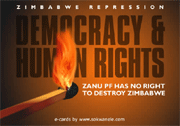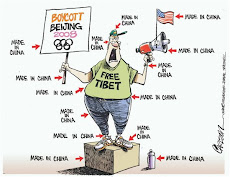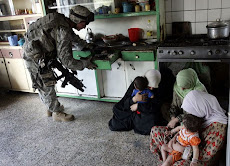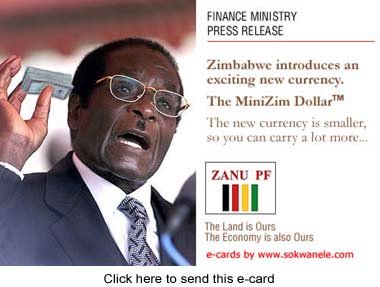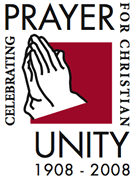 KERINGET, Kenya, Jan. 21st. (NY Times)
KERINGET, Kenya, Jan. 21st. (NY Times) — At first the violence seemed as spontaneous as it was shocking, with machete-wielding mobs hacking people to death and burning women and children alive in a country that was celebrated as one of Africa’s most stable. Kenya’s tensions are especially evident in the Rift Valley. But a closer look at what has unfolded in the past three weeks, since a deeply flawed election plunged Kenya into chaos, shows that some of the bloodletting that has left more than 650 people dead may have been premeditated and organized. Leaflets calling for ethnic killings mysteriously appeared before the voting. Politicians with both the government and opposition parties gave speeches that stoked long-standing hatred among ethnic groups. And local tribal chiefs held meetings to plot attacks on rivals, according to some of them and their followers.
As soon as the election results were announced, handing a suspiciously thin margin of victory to Kenya’s president, Mwai Kibaki — whose policies of favoring his own ethnic group have marginalized about half the country — all the elements lined up for the violence to explode. Thousands of young men swept the countryside, burning homes and attacking members of rival ethnic groups. The killings go on. On Friday, six bodies arrived at a morgue in the town of Narok, northwest of Nairobi, some with deep spear wounds. On a strip of white medical tape affixed to the victims’ foreheads was written their names, dates of death and the cause: “Post-elections violence.” “It wasn’t like people just woke up and started fighting each other,” said Dan Juma, the acting deputy director of the Kenya Human Rights Commission. “It was organized.” What is not clear is if there was a systematic plan to start a nationwide ethnic war, and whether high-level political leaders played a role beyond possibly inciting violence through hate speech. Before the election, it was easy to forget that even Kenya, with its reputation as an African success story and land of tolerance, was split along ethnic lines that are ripe for political manipulation. The grievances, typically about land, economic opportunity and political power, are real and often justified, though usually held in check.
Nowhere are those tensions more evident than in the Rift Valley of western Kenya, which has some of the most fabled and productive land in Africa but recently has been turned into a scene out of “The Grapes of Wrath,” with tens of thousands of desperate people fleeing in battered pickups piled high with beds, chairs, blankets and children. Some trucks are so overloaded their bumpers hang just millimeters above the road. The violence here is decidedly different from that which grinds on in Kenya’s slums, where police officers have opened fire on unarmed demonstrators and rival gangs prowl alleys with rocks in their hands. In the Rift Valley, people do not keep their hatreds or activities secret. Those who have taken part in the killings say the attacks were community efforts, sanctioned by elders and guided by traditions that celebrate a warrior culture.
On a recent day, a dozen young men with faces smeared with mud stepped out of the forest near the small town of Keringet. They were from the Kalenjin ethnic group and said they had killed 20 people this month. They were armed with bows, arrows, clubs and knives. Some wore animal skins with cellphones tucked in the folds. Rono Kibet, one of the men, said elders in his community called a big meeting on Dec. 30. That was the night that Kenya’s election results were announced, giving Mr. Kibaki the victory over Raila Odinga, the top opposition leader, despite widespread evidence of vote rigging. More than 2,000 young men gathered, Mr. Kibet said, and the elders urged them to kill Kikuyus, Mr. Kibaki’s ethnic group, and burn down their houses. The Kalenjin had fought them before. “The community raised the money for the gasoline,” Mr. Kibet said. He explained how the elders blessed the young men, who then split into teams of 50 to hunt down Kikuyus with bows and arrows. He did not feel bad about shooting them, he said. “We attack people, we burn their homes and then we take their animals,” Mr. Kibet said matter-of-factly. A few villages away and a couple of hours later, Kikuyu farmers scanned the hilltops with a pair of old field glasses that never seemed quite in focus. They carried homemade guns built of wood, water pipes and umbrella springs, highly illegal but highly necessary, they said. Some of the sentinels were among the most educated people in the area. One, Wilson Muiruri, a University of Nairobi student, was spending his Christmas holiday moonlighting as a warrior. “I don’t hate Kalenjins at the university,” he said. “But out here, it’s different.”
In Nairobi, the capital, a senior Kenyan police official cracked open a thick binder, with the subject line “ETHNIC CLASHES,” that revealed evidence of what he called a pattern of highly orchestrated mayhem in the Rift Valley. According to the reports, a nine-foot ditch had been cut in an asphalt road by an earth mover, apparently to prevent authorities from being able to get to conflict zones to intervene; thousands of armed men had suddenly materialized in thinly populated villages; and a roadblock had been built with 10 tons of concrete. “You don’t move 10 tons of concrete on your back,” said the police official, who spoke on the condition of anonymity because he was not authorized to share this information publicly. “This is a full military operation.” Most clashes are in rural areas, which are difficult for the police to reach, and the government strategy so far has been to use military escorts to evacuate the people who want to leave. But government officials may have been part of the problem.
About a month before the election, the police found a large weapons cache — 20 bows, 50 arrows, 30 clubs, 30 machetes and 30 swords — in a government car belonging to an assistant minister, a member of the president’s party. The assistant minister, who was not in the car at the time and has denied involvement, has yet to be charged. In any case, several residents in the Rift Valley and local aid workers said parliamentary candidates had been arming young men, though no arrests had been made. Although the authorities have not produced any evidence directly linking top politicians to violence, human rights groups documented speeches by political leaders assailing certain ethnic groups in the run-up to the election. William Ruto, a charismatic opposition leader and Kalenjin chief, was quoted talking about Kikuyu domination. 
Kikuyu politicians, meanwhile, made disparaging remarks about Luos and about how Mr. Odinga, a Luo, was not fit to rule because he is uncircumcised. At the same time, fliers appeared in several towns in the Rift Valley telling Kikuyus to leave. “Warning! Warning! Warning!” read one flier. “Anyone who does not obey will die.” In some cases, the literature seemed to be part of a campaign of dirty tricks to tarnish rivals. In November, a document surfaced in Nairobi, marked confidential and supposedly written by opposition leaders, that laid out a strategy to use “ethnic tensions/violence as a last resort.” “It’s absolutely fake,” said Peter Wanyande, an opposition strategist whose name appears on the document with the wrong first name. “Our opponents are the ones using ethnic violence. It’s terrible.” The government is blaming opposition supporters and their leaders for the Rift Valley bloodshed, especially the episode in which up to 50 women and children seeking sanctuary in a church were burned alive. “This is ethnic cleansing,” said Alfred Mutua, a spokesman for the Kenyan government. Several local chiefs of the Kalenjin and Masai communities said they held meetings before the election discussing how they would attack Kikuyus and push them off their land. Top opposition politicians have said they were not involved and that there were no plans for violence. “The problem was created at the spur of the moment when the elections were stolen,” Mr. Ruto said.
The disappointing reality is that all this has happened before in Kenya: the same places, the same ethnic fault lines, even the same tactics, down to the mud-smeared faces. Both of the times that ethnic violence has swept across the Rift Valley, the early 1990s and now, local tensions have been ignited by politics. The problem starts with land. In the 1960s and 1970s, Kikuyus from the central highlands of Kenya acquired large farms, some legally, some questionably through their connections to Kenya’s first president, Jomo Kenyatta, a Kikuyu. That planted a grudge with local groups like the Kalenjin and Masai. Kenya’s president in 1991, Daniel arap Moi, exploited the hard feelings for his own agenda. Mr. Moi, a Kalenjin, was facing re-election, and he used his network of police chiefs and tribal elders to attack Kikuyus and other ethnic groups affiliated with the nascent opposition movement. The clashes claimed more than 1,000 lives, and though they had subsided by the late 1990s, they never really stopped.
And this recent election cycle, once again, was primed for disaster. For the first time since the 1960s, two heavyweights from rival ethnic groups squared off in a hotly contested race, giving it an inevitable ethnic tinge. The backdrop was growing resentment toward Kikuyus, partly because Mr. Kibaki had put Kikuyus in charge of the most powerful positions in Kenya. Many Kalenjin in the Rift Valley felt their time for redress had come. Mr. Odinga was polling well and promised to implement a policy called majimbo, which means something like federalism but has been interpreted by many to imply the eviction of ethnic groups (namely the Kikuyus) from areas not native to them. Ethnicity in Africa, said Ted Dagne, an Africa specialist for the Congressional Research Service, is an easy flash point because of the perception — and often the practice — that the ethnic group in power will help its own people first and marginalize others. “You don’t see these issues in Kenya as obviously as you see them, say, in Somalia,” Mr. Dagne said, “but underneath, it’s there.”
So are cultural undercurrents. Mr. Kibet, the Kalenjin fighter, explained how at 14 he was sent into the forest for a few months to be circumcised and learn the ways of his people. He was taught how to shoot a bow and crack a skull with a wooden club. He described a transformation that he and his friends routinely make, shedding their jeans and day jobs for war paint and clubs. “The Kikuyu are our enemy because they are on our land,” he said. “It is not good to kill their women or children. But to kill one of their men, that is an achievement.”
by Jeffrey Gettleman
+++++++++++++++++++++++++++++++++++++++++++++++++++
Disclaimer
No responsibility or liability shall attach itself to either myself or to the blogspot ‘Mozlink’ for any or all of the articles/images placed here. The placing of an article does not necessarily imply that I agree or accept the contents of the article as being necessarily factual in theology, dogma or otherwise.
Mozlink

 Is a new sort of thrill-seeker heading for Nepal?
Is a new sort of thrill-seeker heading for Nepal? 
















